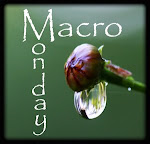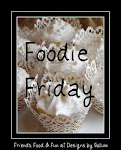On making biscuits: Use a benignly neglectful technique; be a little lackadaisical about working the butter into the flour. Using fingertips—always my first choice—or a pastry blender, cut the butter into the dry ingredients quickly but not conscientiously. You want the mixture to resemble a rocky road—there should be some sandy patches, some tiny little pebbly pieces, pieces as slim as flakes, and pieces as chubby as peas. Let diversity reign. It's the water in these higgledy-piggledy bits of butter that, under the heat of the oven, turns to steam and creates air pockets in the dough that become flaky layers.
On mixing muffins: Muffins do best when mixed least. No beating, and no worrying about the lumps and bumps in the batter—most will disappear in the baking and you'll get just the right light, open crumb.
On baking cookies:
• Always start with a cool baking sheet, otherwise your dough will ooze and melt before it bakes.
• Avoid insulated baking sheets, which bake more slowly than standard ones.
• Always line your baking sheets with parchment paper or a silicone mat, which will not only make cleanup easier but help the cookies to bake more evenly.
• Give your cookies space: even nonspreaders shouldn't be crowded so the oven's heat can bake the edges properly.
• Keep crunchy cookies in one jar and soft, chewy ones in another—combine them and you'll end up with a jar full of softies.
On chocolate chips: Chop your own chips and chunks from fine-quality bar or block chocolate. The big-name supermarket brands are not of premium quality. Chocolate chips, for the most part, don't come from the choicest cacao beans, and the chips end up with a very low percentage of cacao. What they save in convenience, they often take away in flavor and texture.
When I make chocolate chip cookies, I don't worry about cutting the chocolate into uniform sizes or shapes. Having chunks, chips, and slivers makes the eating more fun, and I love the way the mishmash of shapes looks when the cookies are baked—streaked, marbled, tweedy, and totally tempting.
On using butter: Please, please, please, and please again, when a recipe calls for butter, do not use anything else. You cannot use margarine or any other kind of "spread" in a recipe that calls for butter and expect to get the proper results. Try to find unsalted butter for your baking. Using unsalted butter not only gives you control over the amount of salt in your recipe, it gives you a difference in taste and texture, too, since salted butter has a lower percentage ofbutterfat and therefore a higher percentage of water.
On making layer cakes: Always set your filled and frosted layer cake aside for at least 2 hours so the components settle into a whole and the layers attach themselves to one another. That way you can cut impressively clean wedges.
On baking holiday pies: When you've got a turkey just about living in the oven, you need a few strategies for what I think of as battlefront conditions.
• Roll ahead: Roll the pie dough out and fit it into buttered pie plates and keep them ready and waiting in the freezer for up to 2 months. You don't even need to defrost the crusts:
• Just give them a few extra minutes in the oven.
• Partially bake the crusts: You can do this the night before and keep them at room temperature.
• Get a head start on the fillings: Make them the night before and refrigerate.
• Double up: Desperate times call for desperate measures. You can bake the stuffing, sweet potatoes, and green bean casserole at the same time as the pies. Use the temperature needed for pies, since the fixings are flexible.
On pumpkin: If this vegetable were getting its kindergarten report, it would get an A for "playing well with others." I confess that my pumpkin doesn't come from the patch, but right off the supermarket shelves. I always used canned puree (not pie filling, which is already spiced) and always have a couple of cans in the cupboard because a craving can strike long after—or long before—the proverbial frost is on the pumpkin.

from:
Baking
From My Home to Yours
by Dorie Greenspan
Photographs by Alan Richardson
Houghton Mifflin Company
Full-color, 528 pages,
ISBN: 0-618-44336-3
Reprinted by permission.
Buy It Here..
About the Author
Dorie Greenspan has written or co-written eight cookbooks, including Baking with Julia, which won a James Beard Award and an IACP Award; Desserts by Pierre Hermé, which was named IACP Cookbook of the Year; and Chocolate Desserts by Pierre Hermé, which won the Gourmand World Cookbook Award for the best English-language cookbook. She created many recipes for The All-New Joy of Cooking and is a special correspondent for Bon Appétit, for which she writes the "Tools of the Trade" column.
Information provided by the publisher.

























































